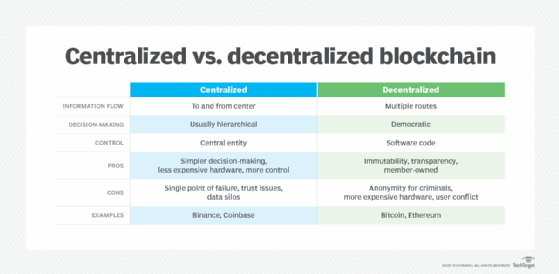
Getty Images/iStockphoto
Worldcoin explained: Everything you need to know
Sam Altman's Worldcoin uses iris scans for unique identification with plans to expand for wider adoption of a global currency on the blockchain. However, there are privacy concerns.
AI continues to grow at a furious pace. While there are many benefits to AI, such as time saving and writing prompts, there are also some challenges and dangers, including deepfakes and fraud.
On July 24, 2023, OpenAI CEO Sam Altman introduced Worldcoin as a new cryptocurrency that offers a new and unique method for identification to reduce the risk of fraud, and all eyes are on it -- literally.
The new cryptocurrency determines "personhood" with a scan of the eyes, helping to prove someone is a person and not a robot.
What is Worldcoin?
Altman, along with Alex Blania and Max Novendstern, co-founded the cryptocurrency initiative and online platform known as Worldcoin. It combines AI technologies with cryptocurrencies and blockchain in an open source protocol to give anyone access to a global economy.
Worldcoin is decentralized, like other cryptocurrencies, which means the decisions are made by users and not a centralized entity, such as a bank. It took two years to develop this project. It seeks to address income inequality through a unique World ID.
The World ID proves that someone is a person and not some form of bot or AI. There are three parts to this project:
- A unique digital identity to be used globally.
- A global currency via Worldcoin tokens.
- An app for payments, transfers and purchases using cryptocurrency or traditional assets.
Learn more about the pros and cons of cryptocurrency.
How does Worldcoin work?
Worldcoin is different from other popular cryptocurrencies, such as Bitcoin and Ethereum, because it offers people a token for the future without requiring any investment funds upfront. The Worldcoin project aims to help create a global economy for all, regardless of country or economic status.
To get Worldcoin, people need to scan their eyes through a sphere-shaped device called the Orb to ensure everyone is human and only signs up once. The unique identifier is taking center stage as AI continues to grow, and proving someone is a person versus a machine is vital with the rise of AI.
Irises are distinct for each person, similar to fingerprints. The iris structure of the subject's eyes is used by the Orb to generate a special identifying code that serves as the person's unique identifier. The code is then saved on the Worldcoin decentralized blockchain to prevent others from replicating the code. The scans are anonymized so they cannot be traced to that person after the identifier is created.

The Orb does not store biometric data but does keep an IrisHash, which is a set of generated numbers to identify the person based on their scan. After a person receives their IrisHash and crypto wallet, they get their World ID or digital passport.
People can find an Orb center for scanning in facilities across 35 countries. The Orb is about the size of a bowling ball and conducts iris scanning in-person at these centers. There are Orbs in several large cities in Africa, Asia, Europe, South America and North America, including locations in New York and California.
Check out Orb locations here.
SMPC and the storage of iris scans
On May 15, 2024, Worldcoin announced its new secure multi-party computation (SMPC) system, which will enhance the security and privacy of biometric data, including its iris scans. Using the new SMPC protocol, iris codes are encrypted into various parts and sent to multiple parties for holding, creating a decentralized identity. The stored iris codes stay encrypted, and data cannot be decrypted from one storage location alone. All storage components are needed to compute results to decrypt the biometric data.
According to Worldcoin, this approach is effective against quantum computing. The SMPC system generally needs too many resources to solve large complex computations, so they have not been used for biometric template protection.
Worldcoin said all old iris codes using the previous system will be deleted once migrated to the new SMPC system.
The SMPC system is in a GitHub repository and is open source for other organizations to use for data protection standards.
3 steps for Worldcoin
To complete the Worldcoin process, there are three steps:
- Download World App. Users can create a Worldcoin account and obtain a crypto wallet called WalletConnect to link to other cryptocurrencies, such as Bitcoin and Ethereum, and more conventional currencies, such as stablecoins. WalletConnect also works with social media apps, such as Instagram and X.
- Sign up for World ID. Users can use World App without the World ID, but they cannot get the free share of Worldcoin tokens without visiting a Worldcoin Operator center and scanning their iris with the Orb to verify identity.
- Receive a free share of Worldcoin and other digital currencies. A person can use their World ID in World App to get their free Bitcoin and Ethereum airdrops after confirming their distinct identity. In countries where Worldcoin tokens are available, users enter their World ID to claim their free tokens.
User privacy concerns
There have been concerns from both regulators and privacy advocates with the collection of Worldcoin's data, including users' informed agreement to having one business handle all their data.
According to Worldcoin, its project is entirely confidential since the biometric data is either erased or stored in an encrypted format.
There are concerns that the iris scans will be available to purchase on the black market, enabling people to gain access to Worldcoin accounts.
Worldcoin's future
Worldcoin creates a new consumer base for cryptocurrency products. It is trying to change the authentication problem in the Web3 cryptocurrency sphere, where users' data and assets are tradable cryptocurrencies.
Worldcoin plans to expand and sign up more global users. It also plans to allow other organizations to use its iris-scanning technology for identification verification to prevent fraud and scams.








